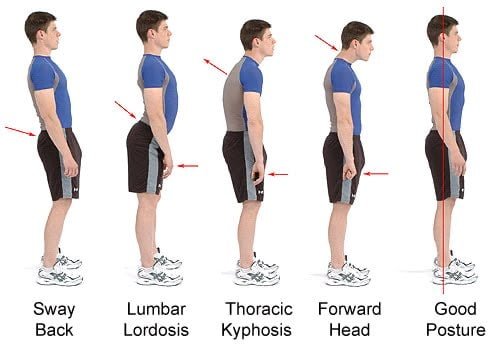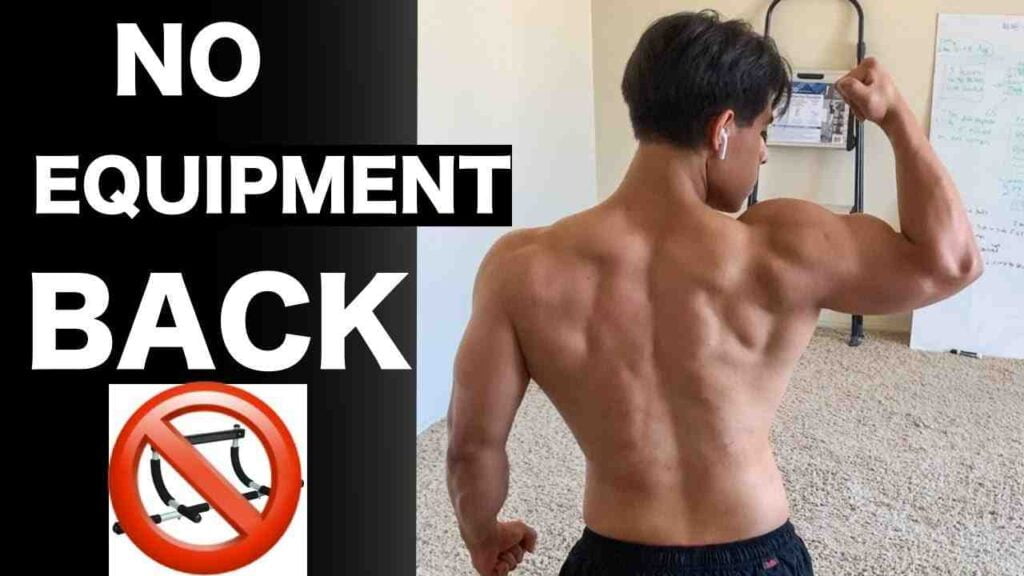Introduction
Welcome to the ultimate guide on “Back Workouts on Cable Machine” – the key to sculpting a strong and well-defined back. Whether you’re a fitness enthusiast or a beginner eager to enhance your workout routine, cable machines offer a versatile and effective way to target those crucial back muscles.
SHOP FOR THE ADJUSTABLE CABLE MACHINE ON AMAZON
In this comprehensive guide, we’ll delve into the intricacies of back anatomy, explore the unique benefits of cable machines, and provide you with a curated collection of essential exercises to elevate your back workout game. From understanding proper form to designing personalized routines, this guide is your go-to resource for achieving success in back training.
Understanding the Anatomy of the Back
Understanding the anatomy of the back is crucial when embarking on a fitness journey, especially when targeting this muscle group using cable machines. The back is a complex network of muscles that plays a pivotal role in maintaining posture, supporting the spine, and facilitating various movements. Let’s break down the key components of the back muscles:
The major muscles in the back can be divided into two groups: extrinsic and intrinsic. The extrinsic muscles are superficial and mainly involved in the movements of the upper limb and the scapula. The intrinsic muscles are deep and mainly involved in the movements of the spine.
The Extrinsic Muscles Include

- Trapezius: A large triangular muscle that attaches to the occipital bone, the spinous processes of the cervical and thoracic vertebrae, the acromion, the spine of the scapula, and the lateral third of the clavicle. It has three parts: upper, middle, and lower. The trapezius elevates, retracts, depresses, and rotates the scapula, and extends the head and neck.
- Latissimus dorsi: A broad, flat muscle that covers most of the lower back. It attaches to the spinous processes of the lower six thoracic vertebrae, the thoracolumbar fascia, the iliac crest, the lower three or four ribs, and the inferior angle of the scapula. It inserts into the floor of the intertubercular groove of the humerus. The latissimus dorsi extends, adducts, and medially rotates the arm.
- Levator scapulae: A thin, strap-like muscle that runs from the transverse processes of the upper four cervical vertebrae to the medial border of the scapula, superior to the spine. The levator scapulae elevates and downwardly rotates the scapula, and bends the neck to the same side.
- Rhomboid major and minor: Two rectangular muscles that lie deep to the trapezius. They attach to the spinous processes of the upper thoracic vertebrae and the medial border of the scapula, below the spine. The rhomboids retract and downwardly rotate the scapula, and fix it to the thoracic wall.
- Serratus posterior superior and inferior: Two thin, quadrangular muscles that lie deep to the rhomboids. The serratus posterior superior attaches to the spinous processes of the lower cervical and upper thoracic vertebrae, and the upper border of the second to fifth ribs. The serratus posterior inferior attaches to the spinous processes of the lower thoracic and upper lumbar vertebrae, and the lower border of the ninth to twelfth ribs. The serratus posterior muscles assist in respiration by elevating and depressing the ribs, respectively.
The Intrinsic Muscles Include
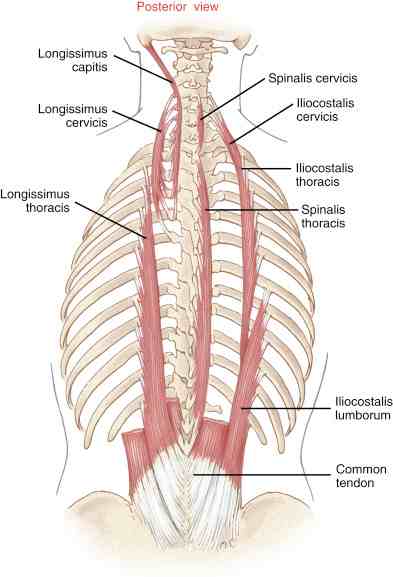
- Splenius capitis and cervicis: Two broad, strap-like muscles that form the superficial layer of the intrinsic muscles. They attach to the spinous processes of the lower cervical and upper thoracic vertebrae, and the mastoid process of the temporal bone and the transverse processes of the upper cervical vertebrae, respectively. The splenius muscles extend and laterally flex the head and neck, and rotate them to the same side.
- Erector spinae: A large group of muscles that form the intermediate layer of the intrinsic muscles. They consist of three columns: iliocostalis, longissimus, and spinalis. Each column has three parts: cervical, thoracic, and lumbar. The erector spinae muscles attach to various bony landmarks along the spine, the ribs, the skull, and the pelvis. The erector spinae muscles extend and laterally flex the vertebral column, and maintain the normal curvature of the spine.
- Transversospinal: A group of muscles that form the deep layer of the intrinsic muscles. They consist of three subgroups: semispinalis, multifidus, and rotatores. Each subgroup has different attachments and lengths, but they all run from the transverse processes of one vertebra to the spinous process of another, crossing several segments. The transversospinal muscles extend and stabilize the spine, and rotate it to the opposite side.
- Interspinales and intertransversarii: Two groups of muscles that form the deepest layer of the intrinsic muscles. They are small muscles that lie between the spinous processes and the transverse processes of adjacent vertebrae, respectively. The interspinales and intertransversarii muscles assist in the extension and lateral flexion of the spine.
SHOP FOR THE ADJUSTABLE BENCH ON AMAZON
Understanding the anatomy of the back is crucial for tailoring effective workout routines. By targeting specific muscles, individuals can achieve a balanced and well-developed back, promoting overall strength and minimizing the risk of injuries.
Benefits of Cable Machines for Back Workouts
Cable machines are excellent for back workouts and offer several benefits:
- Strength & Muscle Building: Cable machines can help build a stronger, thicker, and wider back. They can also boost your performance in other larger compound lifts such as deadlifts or the overhead press.
- Versatility: By using different attachments, angles, and weights, the cable machine can target all the major and smaller muscles of your back.
- Reduced Joint Stress: Cable exercises for the back enable you to move your arms freely, thus reducing possible stress on your joints.
- Constant Tension: Cable machines provide constant tension on your muscles, which is something that dumbbells can’t do.
- Suitable for All Fitness Levels: Both advanced lifters and novices can benefit from doing back exercises with a cable machine.
- Improved Posture, Performance, and Aesthetics: Dedicating sufficient time to training back muscles can do wonders for posture, performance, and aesthetics.
- Increased Time Under Tension: Cable machines increase time under tension, which leads to more muscle hypertrophy.
- Safety: Cable machines are safer for most lifters compared to free weights.
So, whether you’re a beginner or an advanced lifter, incorporating cable machine exercises into your back workout routine can be highly beneficial.
Essential Back Workouts on Cable Machine
Cable machine back exercises are a great way to work on your back muscles and improve your strength, size, and definition. Cable machines provide constant tension on your muscles throughout the range of motion, which can lead to better muscle growth and activation. Many different cable exercises target different parts of your back, such as the latissimus dorsi, the trapezius, the rhomboids, and the erector spinae. Some of the best cable back exercises are:
Lat pulldowns
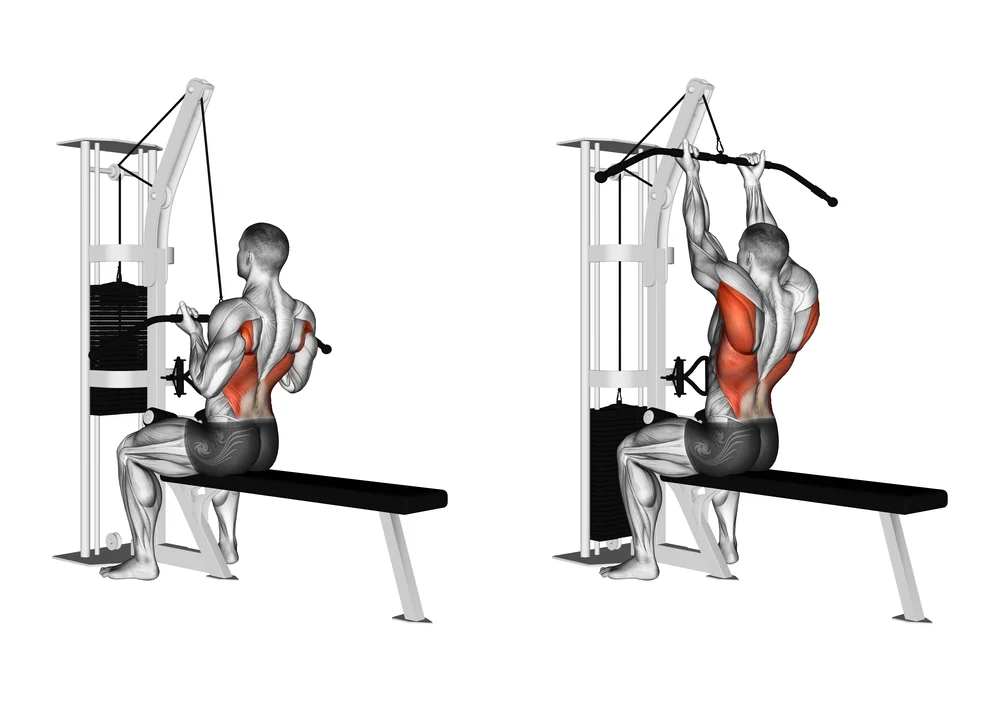
This exercise targets the latissimus dorsi, the largest muscle in your back that gives you the V-shaped look. To perform this exercise, attach a wide bar to the high pulley and sit on the seat with your knees under the pads. Grab the bar with an overhand grip, wider than shoulder-width apart, and pull it down to your chest, squeezing your shoulder blades together. Slowly return the bar to the starting position and repeat. You can also vary your grip width and angle to target different parts of your lats.
Seated cable rows

This exercise targets the middle and lower back muscles, such as the rhomboids, the erector spinae, and the lower trapezius. To perform this exercise, attach a V-bar or a straight bar to the low pulley and sit on the seat with your feet on the platform. Grab the bar with a neutral grip and keep your back straight. Pull the bar to your abdomen, contracting your back muscles and keeping your elbows close to your body. Slowly extend your arms and return to the starting position and repeat. You can also use a rope attachment or a single handle to perform one-arm cable rows.
Cable rope pullovers
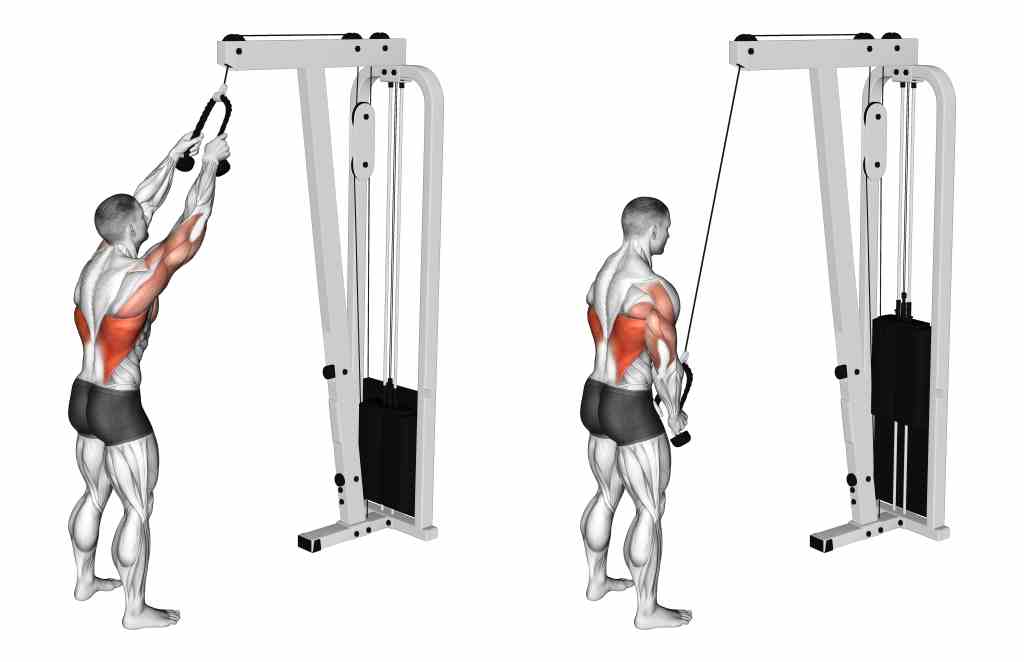
This exercise targets the upper back muscles, especially the serratus anterior, which are the muscles that run along your ribs. To perform this exercise, attach a rope to the high pulley and stand facing the cable machine. Grab the rope with both hands and extend your arms overhead. Keeping your arms straight, pull the rope down to your hips, feeling a stretch in your lats. Slowly raise your arms back to the starting position and repeat. You can also perform this exercise lying on a bench or kneeling on the floor.
Straight-arm pulldowns
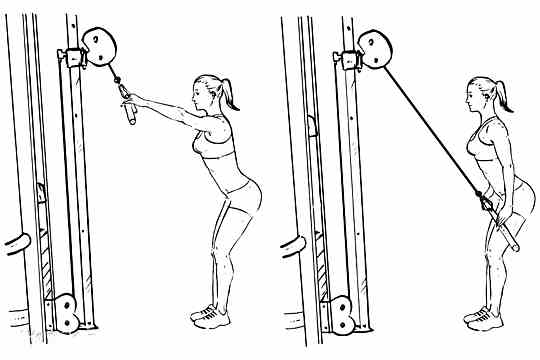
This exercise is similar to the cable rope pullovers, but it targets the lats more directly. To perform this exercise, attach a straight bar to the high pulley and stand facing the cable machine. Grab the bar with an overhand grip, hands shoulder-width apart, and extend your arms in front of you. Keeping your arms straight, pull the bar down to your thighs, contracting your lats. Slowly return the bar to the starting position and repeat. You can also use a rope attachment or a single handle to perform this exercise.
Cable shrugs
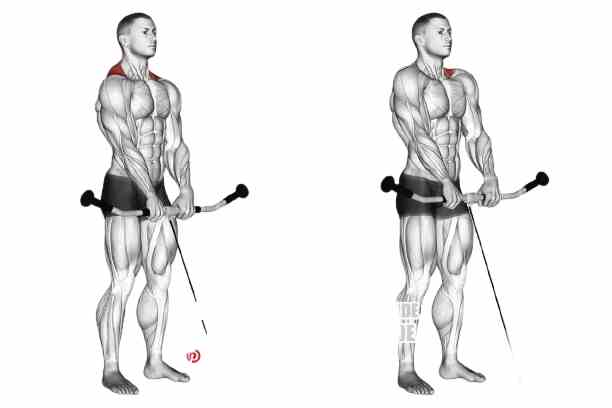
This exercise targets the upper trapezius, which are the muscles that run from your neck to your shoulders. To perform this exercise, attach a straight bar to the low pulley and stand facing the cable machine. Grab the bar with an overhand grip, hands shoulder-width apart, and let your arms hang down. Keeping your arms straight, shrug your shoulders up to your ears, squeezing your traps. Slowly lower your shoulders and return to the starting position and repeat. You can also use a rope attachment or a single handle to perform this exercise.
Face pulls
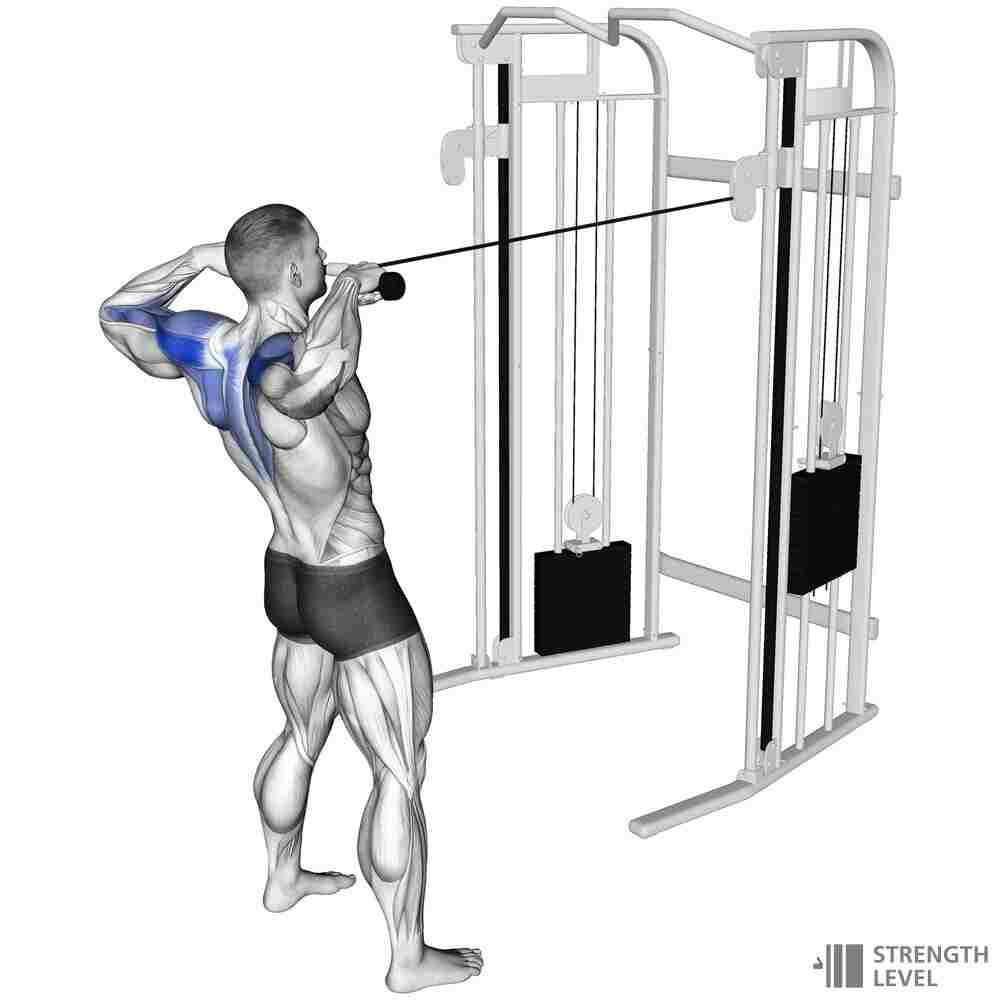
This exercise targets the rear deltoids, which are the muscles that form the back of your shoulders, as well as the upper back muscles, such as the rhomboids and the upper trapezius. To perform this exercise, attach a rope to the high pulley and stand facing the cable machine. Grab the rope with both hands and pull it towards your face, keeping your elbows high and your wrists in line with your elbows. Squeeze your shoulder blades together and hold for a second. Slowly extend your arms and return to the starting position and repeat. You can also perform this exercise kneeling on the floor or sitting on a bench.
Cable lat pulldowns
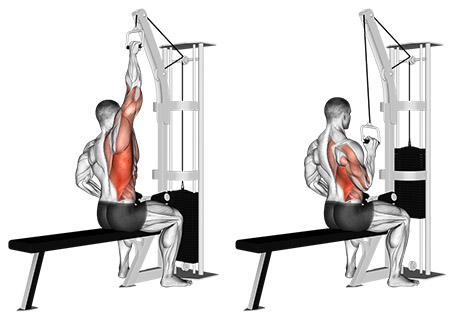
This exercise is similar to the lat pulldowns, but it uses a single handle instead of a wide bar. This allows you to isolate each side of your back and work on your unilateral strength and balance. To perform this exercise, attach a single handle to the high pulley and sit on the seat with your knees under the pads. Grab the handle with one hand and pull it down to your chest, keeping your elbow close to your body. Slowly return the handle to the starting position and repeat. Switch sides and perform the same number of reps with the other hand.
SHOP FOR THE FITNESS TRACKER ON AMAZON
These are some of the best cable back exercises that you can do to build a strong and muscular back. You can mix and match these exercises to create your own cable back workout, or you can follow the sample workout below.
- Warm up for 10 minutes with some light cardio and dynamic stretches.
- Perform 3 sets of 10-12 reps of each exercise, resting for 60 seconds between sets.
- Start with the lat pulldowns, then move on to the seated cable rows, the cable rope pullovers, the straight-arm pulldowns, the cable shrugs, the face pulls, and finish with the cable lat pulldowns, alternating sides for each set.
- Cool down for 10 minutes with some light cardio and static stretches.
This is the sample cable back workout that you can do to work on your back muscles and improve your strength, size, and definition. You can adjust the number of sets, reps, and rest periods according to your fitness level and goals.
Tips for Maximizing Back Workout Results
Maximizing the results of your back workout is crucial for building a strong and sculpted upper body. Here are some effective tips to ensure you get the most out of your back training on the cable machine:
- Focus on Form: Ensure proper form during each exercise to effectively target the back muscles and minimize the risk of injury.
- Incorporate Progressive Overload: Gradually increase the weight or resistance to challenge your muscles and promote continuous growth over time.
- Vary Your Grip: Experiment with different grips, such as wide grip and reverse grip, to target various areas of the back and prevent monotony in your routine.
- Include Isolation Exercises: In addition to compound movements, add isolation exercises like face pulls or single-arm cable exercises to target specific muscles for a well-rounded workout.
- Mind-Muscle Connection: Concentrate on the muscles you are working to enhance the mind-muscle connection, ensuring optimal muscle engagement during each repetition.
- Prioritize Pulling Movements: Emphasize pulling exercises like rows and pulldowns, as they activate multiple muscles in the back, contributing to overall development.
- Ensure Full Range of Motion: Perform exercises through their complete range of motion to maximize muscle activation and enhance flexibility.
- Stay Consistent: Consistency is key. Stick to a regular workout schedule, and be patient as results may take time to become noticeable.
- Include Proper Warm-Up and Cooldown: Warm up before your workout to increase blood flow and flexibility, and cool down afterward to aid in muscle recovery and reduce stiffness.
- Balanced Nutrition and Hydration: Support your workouts with a balanced diet rich in protein for muscle repair. Stay hydrated to optimize overall performance and recovery.
Remember, individual preferences and fitness levels may vary, so it’s essential to tailor these tips to your specific needs and listen to your body throughout your back workout routine.
Common Mistakes to Avoid
In the quest for a sculpted and strong back, it’s crucial to be mindful of the common mistakes that can hinder your progress and even lead to injury. Here are some key errors to avoid when performing back workouts on cable machine:
1. Overarching the Back
- Mistake: Excessive arching of the back during exercises, especially during lat pulldowns, can strain the lower back and reduce the effectiveness of the workout.
- Solution: Maintain a neutral spine by engaging your core muscles. Focus on keeping your back straight and avoid hyperextension.
2. Improper Grip and Hand Placement
- Mistake: Using an incorrect grip or hand placement on the cable attachments can compromise the targeting of specific back muscles.
- Solution: Follow recommended hand positions for each exercise. For instance, in lat pulldowns, a wide grip emphasizes the outer lats, while a narrow grip targets the inner lats.
3. Neglecting Warm-up and Cooldown
- Mistake: Skipping warm-up exercises before diving into cable machine workouts or neglecting cooldown stretches can increase the risk of injury and hamper recovery.
- Solution: Incorporate dynamic stretches and light cardio for warm-up, and perform static stretches post-workout to enhance flexibility and reduce muscle stiffness.
4. Relying Solely on Cable Machines
- Mistake: Exclusively using cable machines for back workouts and neglecting other forms of training can lead to imbalances and limit overall muscle development.
- Solution: Combine cable machine exercises with free weights and bodyweight exercises to ensure a well-rounded and comprehensive back training routine.
5. Ignoring Proper Breathing Techniques
- Mistake: Holding your breath or breathing inconsistently during exercises can lead to decreased oxygen flow to muscles and hinder performance.
- Solution: Practice controlled breathing. Inhale during the eccentric (lengthening) phase and exhale during the concentric (shortening) phase of each repetition.
6. Using Excessive Weight
- Mistake: Lifting weights that are too heavy can compromise form and increase the risk of injury.
- Solution: Choose a weight that allows you to maintain proper form throughout the entire range of motion. Gradually increase the resistance as your strength improves.
7. Skipping Scapular Retraction
- Mistake: Neglecting to retract the shoulder blades during exercises like cable rows can limit muscle engagement and hinder back development.
- Solution: Focus on squeezing your shoulder blades together during pulling exercises to activate the target muscles effectively.
8. Not Adjusting the Cable Machine Properly
- Mistake: Failing to set up the cable machine to the correct height or resistance can lead to ineffective workouts.
- Solution: Adjust the machine according to your height and the specific exercise. Ensure the cable provides enough resistance to challenge your muscles without compromising form.
SHOP FOR THE QUALITY PROTEIN SUPPLEMENTS ON AMAZON
By steering clear of these common mistakes and practicing proper form, you’ll optimize the effectiveness of your back workouts on cable machine, promoting muscle growth, strength, and overall back health.
FAQs
Q 1: Can cable machines effectively target all major muscles in the back?
Ans: Yes, cable machines are versatile and can target various muscles in the back, including the lats, traps, rhomboids, and rear deltoids.
Q 2: Is it necessary to use specific attachments for different cable machine exercises?
Ans: While certain exercises may benefit from specific attachments, many can be performed with a standard cable machine handle. Experimenting with different attachments can add variety to your workout routine.
Q 3: How often should I change my back workout routine for optimal results?
Ans: It’s beneficial to incorporate variety into your routine every 4-6 weeks to prevent plateauing. This can involve changing exercises, adjusting resistance, or modifying your workout split.
Q 4: Can cable machines replace traditional free weights for back training?
Ans: Cable machines offer unique benefits, but a well-rounded approach combining both cable and free weight exercises is often recommended for comprehensive back development.
Q 5: How important is progressive overload in cable machine back workouts?
Ans: Progressive overload, gradually increasing resistance over time, is essential for continuous muscle growth. It can be achieved by adjusting the weight, sets, or reps in your routine.
Q 6: Can beginners incorporate cable machine back exercises into their routine?
Ans: Yes, many cable machine exercises are beginner-friendly, and adjustments can be made to accommodate different fitness levels. It’s essential to start with lighter weights, focus on form, and gradually increase intensity.
Q 7: Are cable machine workouts suitable for individuals with back problems or injuries?
Ans: Individuals with pre-existing back issues should consult with a healthcare professional before starting any new workout routine. Some cable exercises may be adapted or avoided based on individual conditions.
Conclusion
In conclusion, mastering back workouts on cable machine can be a game-changer for your fitness journey. This comprehensive guide has delved into the anatomy of the back, the benefits of cable machines, essential exercises, and practical tips to design effective workout routines.
By understanding proper form, avoiding common mistakes, and incorporating the provided insights, you can embark on a journey towards a stronger and more sculpted back.

Good day, and welcome to Fitthour. My name is Shubham Vijay, and I am a certified personal trainer and nutrition coach with 6 years of experience in the fitness industry. At Fitthour, we specialize in types of training, such as strength training, cardio, or HIIT, and our mission is to help clients achieve their fitness goals and improve their overall health.

